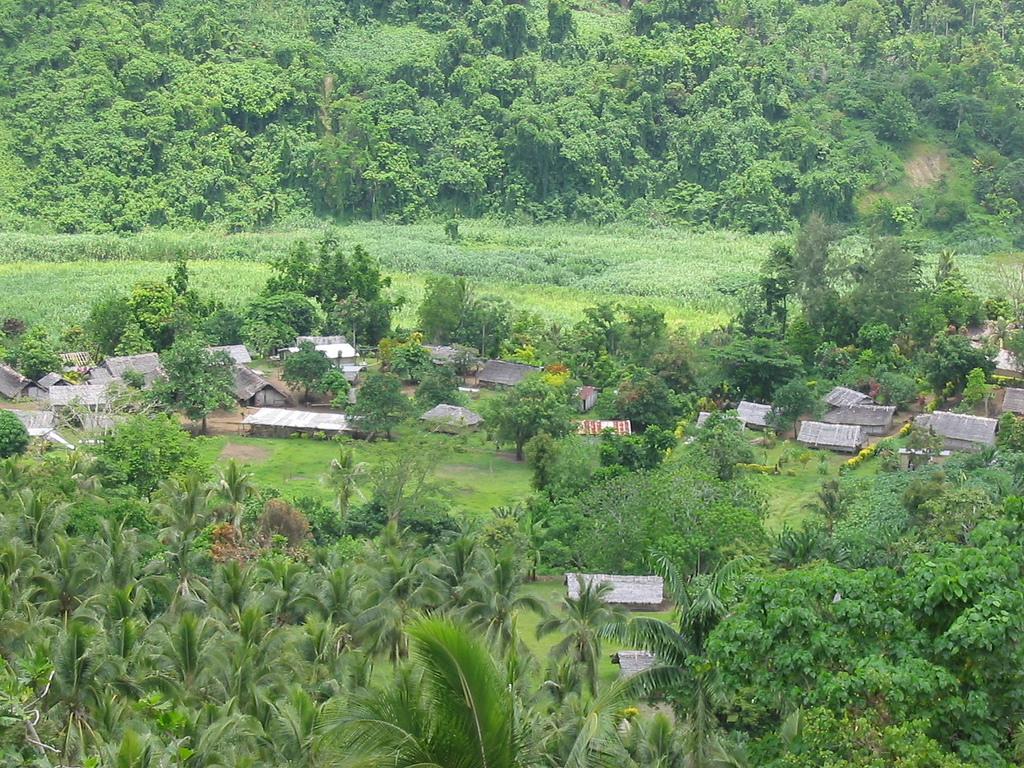Malekula
Considering its relative proximity the capital and the fact that this is Vanuatu‘s second largest island, Malekula remains surprisingly little visited. Nevertheless, there are stunning offshore islands, amazing multi-day treks from coast to coast, lots of festivals and dances, remote traditional villages a day’s walk from the nearest road and some of the warmest, most welcoming people in this extraordinarily friendly country.
Photo by meyerak on Flickr
The island is shaped like a sitting dog. The head, or smaller northern part of the island, is somewhat more densely populated and most villages are accessible by dirt track. Travel here by walking and hitch hiking is pretty simple and the distances to be covered relatively small. Trucks run from Lakatoro (the main village on Malekula) to Veturah in the north.
The south (the dog’s body) is much larger, more rugged and more demanding to travel in. The only road, a dirt track that passes through several rivers, runs down the east coast from Lakatoro to Lamap. A truck usually takes passengers once a day down this road.
Boats go at least once a week from Lakatoro to Port Vila, Vanuatu‘s capital, taking about 17 hours, and more regularly to Espiritu Santo which is only a few hours away. See this website’s main Vanuatu page for information on the condition of boats in the country. There are also regular flights to both of the above-mentioned destinations.
Whether you arrive by boat or plane it will be a fairly long walk to Lakatoro village. There are taxis and minibuses during weekdays but if you arrive at the weekend or at night try to hitch a lift with passengers who you arrived with. Ask around with locals about a place to stay and details on when and from where trucks leave.
An incredible trek to do here is the multi-day one across southern Malekula. If you’re in good shape and don’t have much time you could do it in two days but to really appreciate it I would take four or five, relax in the remote villages nestling among the jungle-covered mountains and eat island food and drink kava with the spectacularly hospitable locals. You can pick up local guides in the villages but make sure you pay them well – people here are so friendly and polite that they sometimes will be too shy ask for money to guide you, put you up or feed you! It of course remains up to you as a responsible traveler to do this as these people are far from rich.
The trek begins in Unua, a village halfway down the road on the east coast. From there it’s an easy two to three hour flat walk on a good path to the village of Melken. From Melken it’s a VERY tough eight to ten hour trek to the village of Lambongbong. The first few hours of the trek are incredibly steep and the path is often very muddy. A lot of the time you are simply just scrambling up a slope on all fours. After that there is a fresh water source where you can fill up bottles or, if you don’t have bottles, bamboo shoots. N.B. – ask at Nambor, a village near Melken, if they can show you their Kastom site complete with dancing grounds, scary masks, carved drums and a totem pole!
From Lambongbong it’s six to eight hours to the village of Wintua in a place called South West Bay where there is a simple guest house. There is also a grass air strip here with very irregular flights out and occasional motor boats going along the coast to places connected to Lakatoro by road. Do not, however, come here if you are on a tight schedule and need guaranteed transport out on a particular day.
Warning – Malekula has malaria so take all the precautions. Also ask locals before swimming anywhere – there are plenty of sharks in these waters.
Second warning – don’t believe the mind-bogglingly inaccurate Lonely Planet that locals in interior Malekula go around completely naked or dress “only in the leaves of the jungle” – if you come here expecting that you will be sorely disappointed as all villages have been converted to Christianity and wearing Western clothes for over a very long time now. People only wear traditional dress these days for special occasions such as dances, feasts, circumcisions, etc.
Click here for my 2754 word blog on Malekula.

Man that sounds just like the trip I would like to do, but at 68 years young and only 70% fit I would need to do a lot of build up walking before going there. I want to go to the northern parts of the island later on this year if I can. Would like to see more photos of your trip too. David Mault